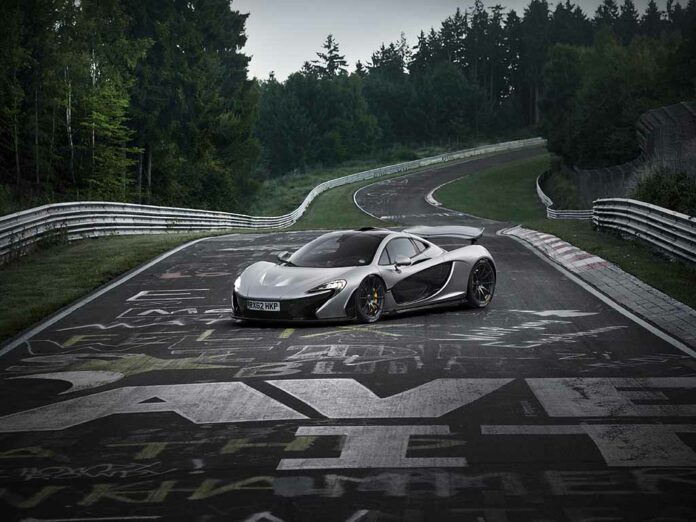McLaren celebrates this week the tenth anniversary of the unveiling of the production version of the McLaren P1 ™. Unveiled at the Geneva Motor Show in 2013, this extraordinary hypercar is recognised as a benchmark for both McLaren and the development of high-performance hybrid vehicles, most recently proposed by McLaren Artura.
Created with the intention of being “the best car in the world on both road and track”, the McLaren P1™’s design and technical specifications provided the ideal basis for achieving this. A series of test and development results during 2013, including a lap of the famous Nürburgring Nordschleife, immediately confirmed what the car’s credentials were intended to be.
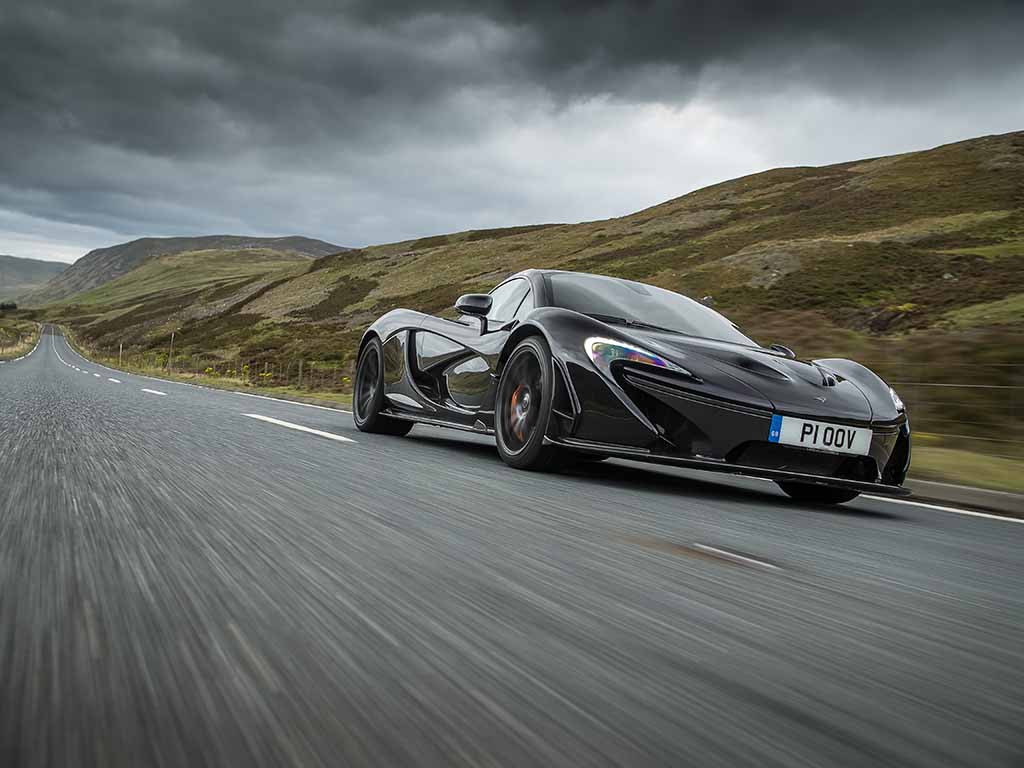
McLaren P1, the characteristics
The M838TQ 3.8-litre V8 engine with twin supercharger, capable of generating 737 hp, is combined with a lightweight 179 hp electric motor for a total of 916 hp. This enabled performance levels that were, and still are, astonishing: 0-100 km/h acceleration in 2.8 seconds, 0-200 km/h in 6.8 seconds and 0-300 km/h in 16.5 seconds, a full five seconds faster than the legendary McLaren F1. The top speed of 350 km/h can only add to the McLaren P1™’s appeal and reputation, but it was the instantaneous throttle response and torque injection that proved that electrification can really improve modern turbocharged engines. MEDIA
In addition to its innovative hybrid, petrol-electric powertrain, this Ultimate hypercar wears two distinctive McLaren strengths at its core: low weight and aerodynamic excellence.

The MonoCage carbon-fibre monocoque with roof in the middle of the McLaren P1™ is an evolution of the MonoCell structure used in the McLaren 12C supercar and was the key to optimising mass in a vehicle with a minimum dry weight of just 1,395kg. While the DIN weight (in running order) is 1,490 kg.
For McLaren, lightness remains a priority in research and development, and in 2023 the Artura, also a high-performance hybrid car, rather than an extreme limited-edition hypercar is a mass-produced and generously equipped supercar, with a DIN (running order) weight of only 1.498 kg.The carbon-fibre body panels of the McLaren P1™ consist of a large shell, single-moulded front and rear panels connected to the central MonoCage, two small access hatches at the rear, the front bonnet and the two doors. With a total weight of only 90 kg, the panels are extraordinarily thin but also very strong. The hybrid battery is mounted low down inside the carbon-fibre MonoCage and weighs only 96 kg. This philosophy of minimising weight is still evident today, with maniacal attention also applied to the Artura.
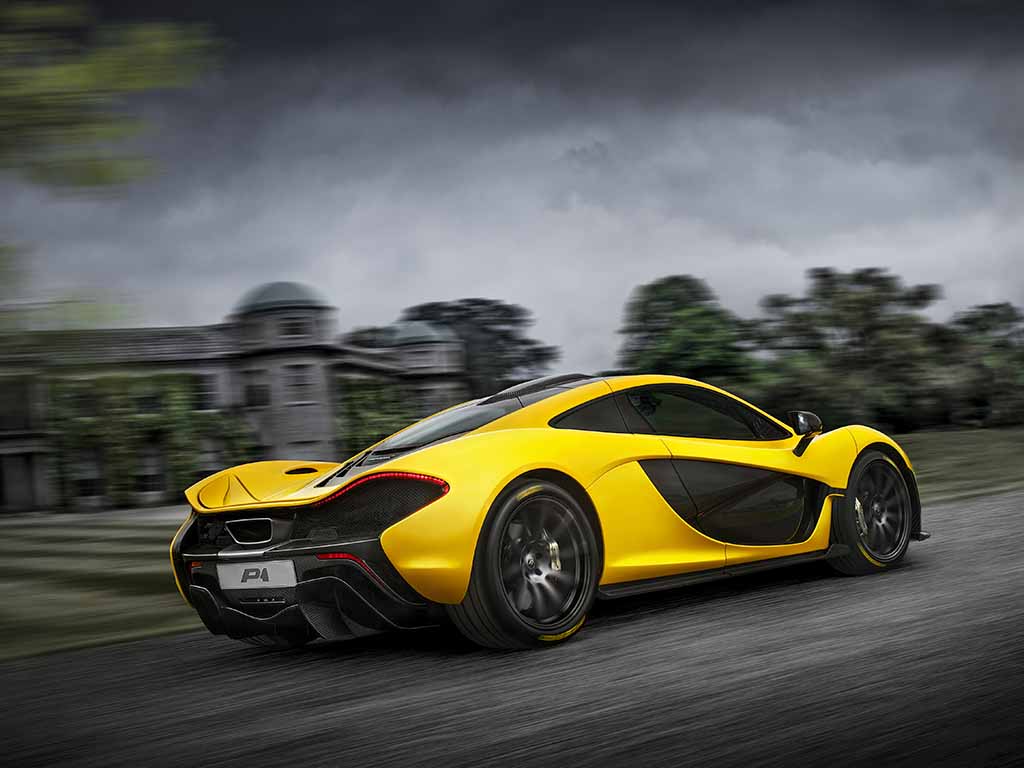
The weight reduction concept in the McLaren P1™ did not include the use of carpeting, which was considered superficial, as much as sound-absorbing panels, to keep the weight down.
Also as part of the weight reduction concept, the glazing was also redesigned: the chemically hardened roof glass is extremely light and only 2.4 mm thick. The windscreen is only 3.2 mm thick, including a plastic interlayer, saving 3.5 kg at the time compared to the 4.2 mm thick windscreen of the 12C.
The McLaren P1™’s large rear wing optimises aerodynamics by automatically adjusting itself. It can extend up to 300 mm at the rear on the track and 120 mm on the road. This wing was developed using the same software and methodology used by the McLaren Formula 1 team. A DRS (Drag Reduction System) has been integrated into the McLaren P1™ design to reduce downforce and increase straight-line speed, achieved through the movement of the rear wing, rather than using a removable flap.
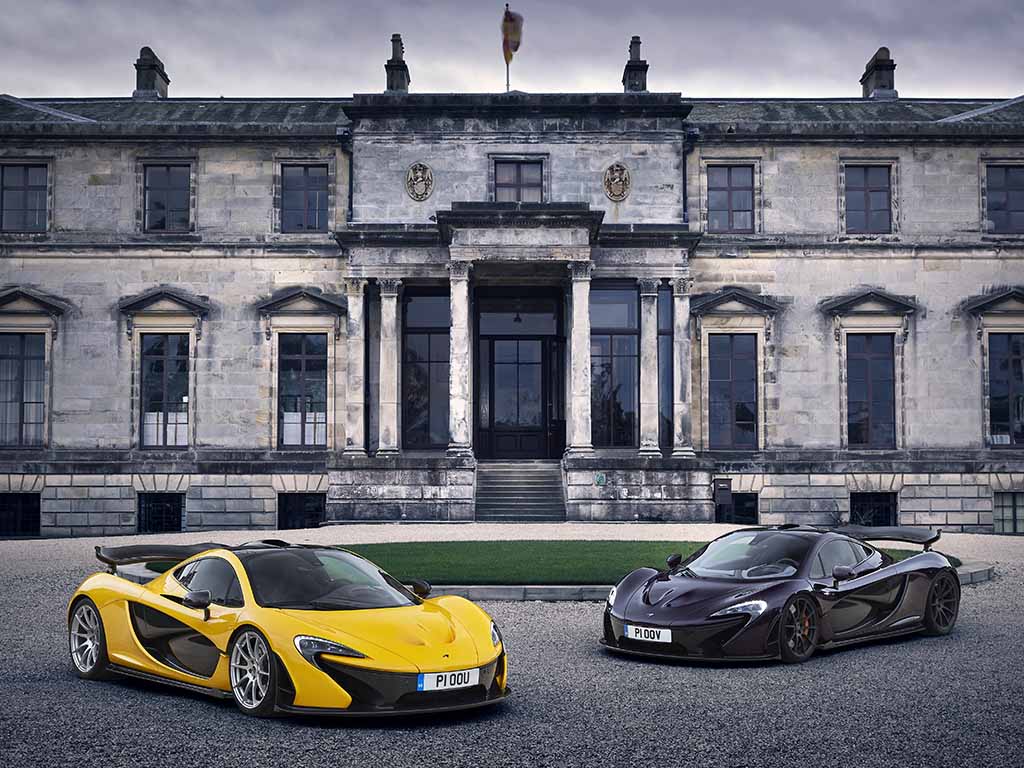
A combination of CFD (computational fluid dynamics) aerodynamic modelling and many hours spent in the wind tunnel focusing on aerodynamic performance has allowed the McLaren P1 to achieve a downforce of 600kg at well below top speed.
Since its unveiling, the McLaren P1™ has been the object of the highest attention from collectors and enthusiasts and was sold out within months of its launch, with all 375 cars sold out by November. Construction of the first of 375 production models of the McLaren P1™, in Ice Silver paint, was completed in September 2013, by which time the car had established itself as an absolute benchmark for performance. The last car ordered was completed in December 2015; it was painted in a stunning pearl orange, a colour achieved through a unique colouring process that has since become available in other McLaren models as Volcano Orange.
Ten years after its unveiling at the Geneva Motor Show – and in the year in which McLaren also celebrates its 60th anniversary since Bruce McLaren founded the company – the McLaren P1™ remains an extraordinarily exciting car on both road and track.
The P1TM ‘s important legacy extends beyond its iconic status in McLaren’s lineage of technologically advanced, driver-focused cars. As the forerunner of electrification as a driver engagement enhancement, it was the car that changed the perception of technology, inspiring the innovative Artura; a supercar that combines thrilling performance and driving dynamics with EV-only performance – a winning combination first introduced by the McLaren P1TM.
McLaren P1™: ten hallmarks of an iconic hypercar
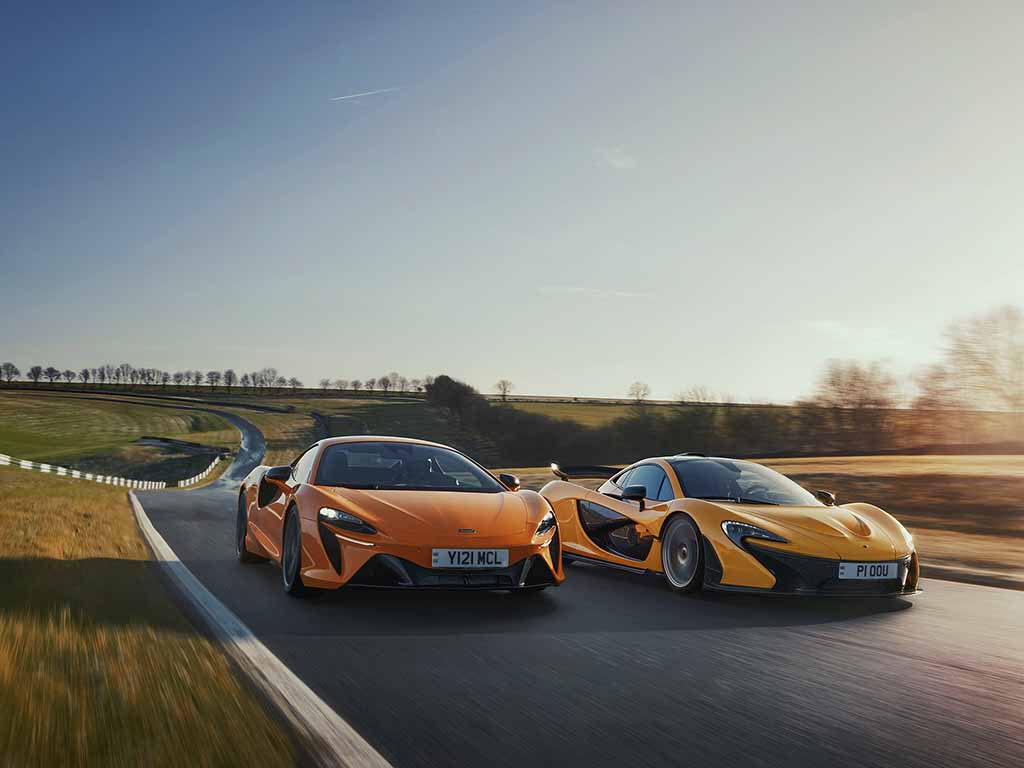
▪ The McLaren P1™ goes from 0 to 300 km/h in 16.5 seconds: a full 5.5 seconds faster than the legendary McLaren F1
▪ The McLaren P1™ can move a few kilometres in all-electric mode with zero emissions for city driving
▪ In Race mode, the McLaren P1™ lowers by 50 mm and the spring stiffens by 300 per cent, allowing the car to go through corners at over 2g
▪ McLaren P1™’s adjustable rear wing extends from the bodywork by up to 120mm on the road and up to 300mm on the track
▪ Silicon carbide-coated carboceramic discs allow the McLaren P1™ to come to a complete stop from 100 km/h in just 30.2 metres
▪ Formula 1-style Inconel exhaust follows the most direct route from the engine to the rear of the McLaren P1™ and weighs just 17 kg
▪ The steering wheel diameter of a McLaren P1™ is technically as precise as a steering wheel used by McLaren drivers: the grips of McLaren’s Formula 1 world champions were modelled on a CAD system during development and scanned to produce a perfect replica
▪ Each McLaren P1™ was custom-built by a team of 82 technicians in a four-stage assembly process. From start to finish, the construction of each car took 17 days
▪ During its development programme, the McLaren P1™ travelled more than 620,000 test kilometres, equivalent to more than 15 times around the world.
▪ The name comes from Grand Prix racing, ‘P1’ meaning the first place on the grid, but there is also a legacy in the name: the McLaren F1 was originally known as Project 1, or P1


